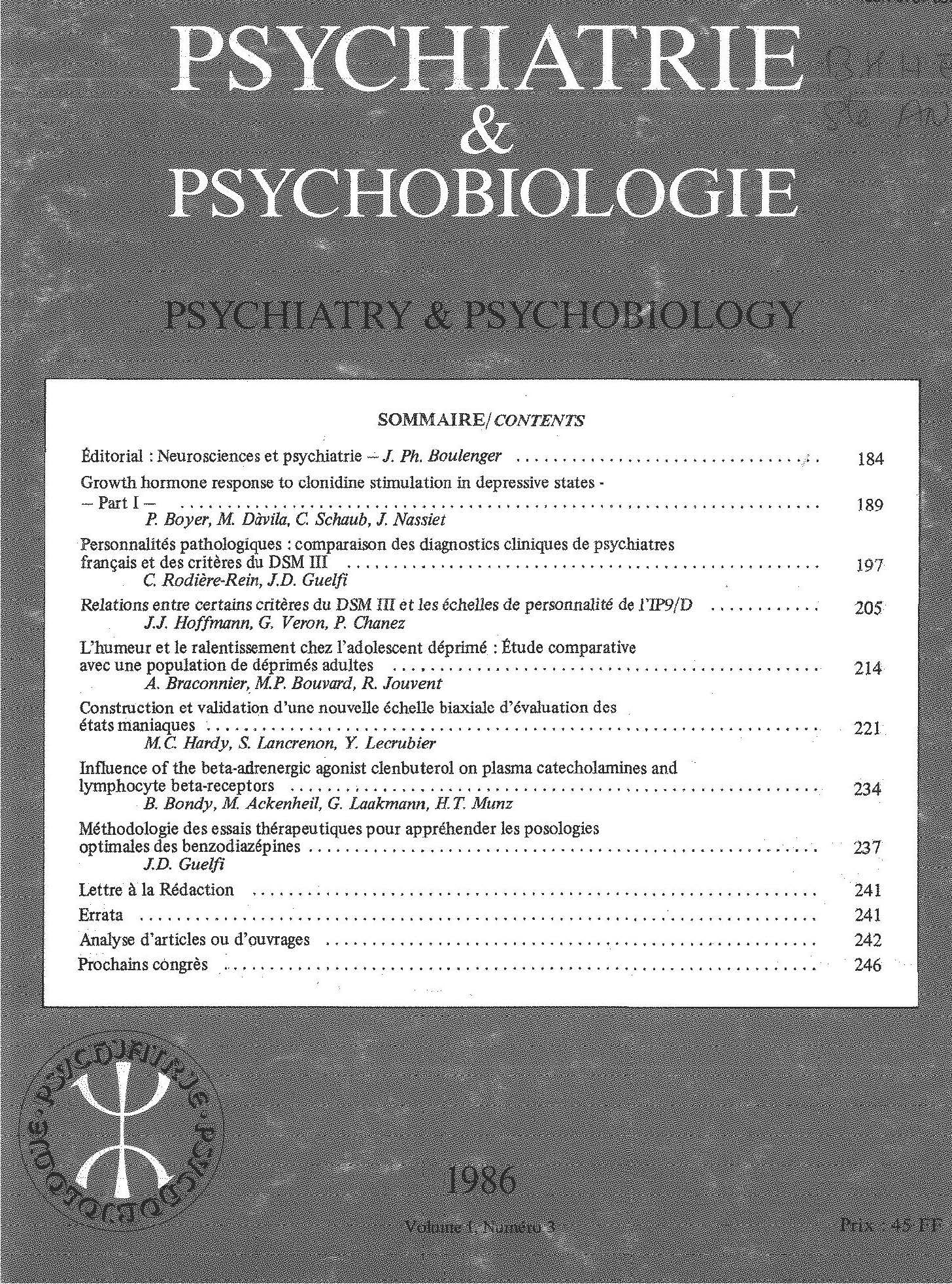Article contents
Problems in the classification of anxiety disorders
Published online by Cambridge University Press: 28 April 2020
Summary
The classification of neurotic disorders still remains an unresolved problem. It has even been argued that there is no necessity to classify such unspecific reaction modes. Nevertheless, modern clinical research and new treatments both suggest and require that distinctions be made in the realm of neurotic disorders. DSM-III has paved the way for classifications based on symptoms, a trend present in DSM-IV and ICD-10 (Table I) drafts. However, the history of those disorders becomes blurred with this approach, and certain questions arise; for instance, what the relationship is between childhood separation anxiety and panic attacks in the adult, or between the latter and agoraphobia, or between childhood separation anxiety and major depression. Some longitudinal data, including that included in the present paper (Tables II—V), suggest a close relationship between these disorders, which is very much in contrast with what occurs in generalized anxiety disorders. Both patients with panic disorder and those suffering from general anxiety disorder tend to become chronic somatizers with advancing age, as is shown in the data presented in this paper.
Résumé
La classification des troubles névrotiques est encore un problème non résolu. Il a même été dit qu'il n'y avait aucun besoin de classification de ce qui n'est qu'une forme de réaction non spécifique de la nature humaine. Toutefois les nouvelles recherches cliniques et les nouveaux traitements ont fait surgir des perspectives et des besoins différents obligeant à faire des distinctions plus précises dans le champs des troubles névrotiques. Le DSM-III a ouvert le chemin à des classifications basées sur les symptômes, tendence qui se poursuit actuellement dans le DSM-IV et ICD-10 (Table I) en cours de rédaction. Malgré tout, cette perspective symptomatique obscurcit l'histoire naturelle de ces troubles et des questions nombreuses surgissent. Par exemple, quelles sont les rapports entre l'anxiété de séparation des enfants, les crises de panique des adultes ou entre ces deux troubles et l'agoraphobie ou les dépressions majeures? Quelques données de recherches longitudinales, parmi elles ceux de l'article présent (Tables II-V) suggèrent l'existence de rapports étroits entre tous ces troubles, ce qui est en contraste avec ce qui est trouvé, dans les troubles d'anxiété généralisée. Mais d'une autre part les deux types de troubles, panique et anxiété généralisée, tendent en devenant chroniques à se manifester sous la forme de «somatdations chroniques».
Keywords
Information
- Type
- Original article
- Information
- Copyright
- Copyright © European Psychiatric Association 1989
References
- 1
- Cited by


Comments
No Comments have been published for this article.